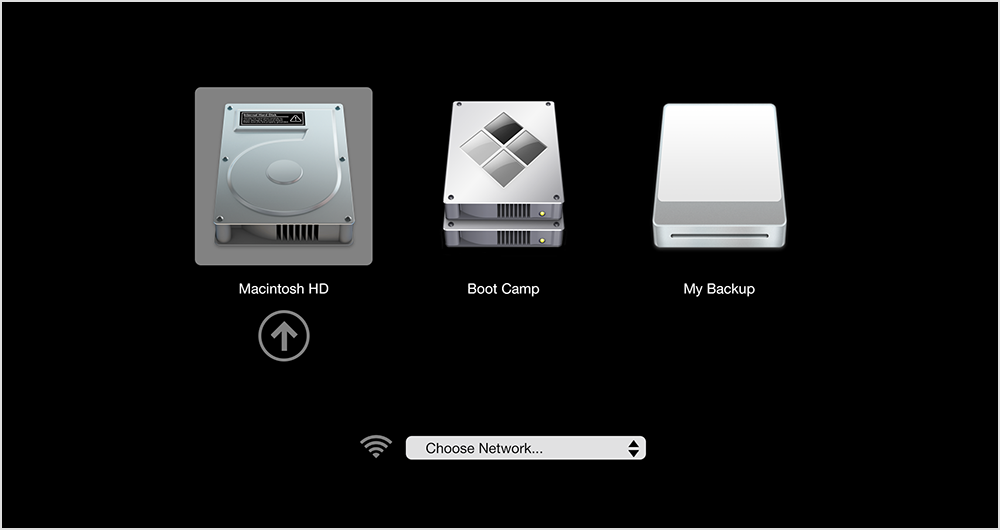Install Mac Os X El Capitan On New Hard Drive To Windows 10 Oct 01, 2015 An alternative approach is to create a dedicated installation drive from the El Capitan installer, and use that to install the upgrade. Install El Capitan OK, now you can click that Continue button in the installer window. (If the installer isn’t running, go to your Applications folder and double click the Install OS X El Capitan. Depending on what version of Mac OS X is on the computer right now, you can try to use Recovery Mode (Command + R on boot) to reinstall. A better option may be to use a USB installer drive for El Capitan or whatever version you are hoping to reinstall.
Jun 19, 2020 As explained here, OS X 10.11 'El Capitan' fails to install because it is too old (the technical reason being that the signing certificate is no longer valid). But you can trick the OS X installer into thinking that it is 2017 and it will happily run without any errors. Mar 04, 2021 How to Perform a Clean Install of OS X El Capitan. OS X El Capitan (OS X 10.11) offers two installation methods. This guide focuses on the 'clean install' method. When you install El Capitan on your current startup drive with the clean install method, you erase everything on the drive. That includes OS X, your user data, and personal files.
My MacBook Air is running a 120GB SSD drive so I don’t want my hard drive full of excess things I don’t need. I just noticed after El Capitan that I lost a lot of space. I only had 10GB free. To run well a mac hard disk needs at least 20% free. Here’s how I freed up some more space.
I ran Disc Inventory X to see where the excess space was taken.
1. Remove old iPhoto library.
Look at this screenshot from Disk Inventory X: The pink section surrounded by the yellow line is my old ‘iphoto’ library. The large turquoise section to the left is the new ‘Photos’ library. El Capitan came with a new app called ‘Photos.’ The new Photos app imported my old iPhoto library, but it didn’t delete it! They are the same photos, the entire library has been duplicated. Deleting my old iPhoto library released almost 7 G of space!
In a pinch, if the USB installers aren't working, go here, macintoshrepository.com get the.iso for Snow Leopard, burn it to a DVD and it should load and install. Get online, update to 10.6.8, then it will nag you to update to the last usable OS and you follow the prompts from that point. # Update: OS X El Capitan is no longer the latest version of OS X / macOS available on the App Store. If you want to upgrade to the latest version, you can follow our dedicated article on how to upgrade from OS X to macOS Sierra via direct download. If you are on an earlier version of OS X, you can download and install El Capitan from directly.

To find the file just right click on the box and select ‘reveal in finder’:
This took me to the following folder:
Free online convert png to icokeyclever. I just dragged this to the trash and saved 6.6GB.
While I was at it I went to my ‘Applications’ folder and deleted the old ‘iphoto’ app which took up 1.7GB.
I could do this pretty confidently because my macbook air is my second machine, all my photo’s are only home computer if anything goes wrong.
Os X El Capitan No Disk To Install
2. Gmail ‘All Mail’
This huge multicoloured box turns out to be the Gmail ‘All Mail’
Os X El Capitan No Disk To Install Windows 10
I discovered 15GB of gmail data in Apple Mail. Yes Apple mail now by default seems to download the gmail ‘All Mail’ folder which included every email you’ve ever deleted on gmail. The ‘All mail’ folder had over 17,000 emails in it. No wonder my internet usage was high last month – my laptop must have downloaded the entire 15GB of emails from gmail.
Install Os X El Capitan On New Hard Drive
Thankfully it was a simple fix.
Here’s how to disable the ‘All mail’ folder from being downloaded to your Macintosh.
Go into Gmail.com, then go to Settings on the top right menu, then under the ‘Labels’ tab I changed ‘All Mail’ to ‘Hide’
Install Mac Os X El Capitan On New Hard Drive
I still needed to delete the files from the hard disk manually.

I am using OSX El Capitan, and Mail version 9.1. I am not sure what other versions of mail have this problem.
Other items…
The were some other files I found with Disk Inventory X, (Old installers, old apps, some movies) and when I deleted them all in total I recovered 30GB!